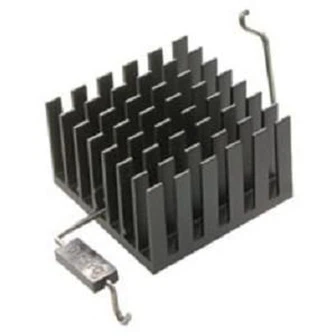Comparison between direct liquid cooling and indirect liquid cooling
The first step in the thermal design and development process is to confirm which cooling method the product needs to use, in order to reserve corresponding design space in the early stage of the product. Currently, the cooling methods for electronic products are mainly divided into four categories: natural heat dissipation, forced air cooling, and liquid cooling. With its efficient cooling capacity and lower energy consumption ratio, liquid cooling schemes are increasingly being used in thermal design, which are further divided into direct cooling and indirect cooling.

Direct cooling: The components are directly immersed in a liquid for heat dissipation. Also known as immersion liquid cooling or immersion liquid cooling. At present, this technology is on the rise, and some data centers have already used this cooling method. Direct liquid cooling has extremely high heat transfer efficiency, and the energy consumption for temperature control is significantly reduced compared to air cooling. Therefore, the PUE value (Power Usage Efficiency, PUE=Total Equipment Energy Consumption/IT Equipment Energy Consumption) of data centers using immersed liquid cooling can be greatly reduced, and there are reports that even lower values than 1.05 can be achieved [1].

From the contact form between liquid working fluid and components, direct liquid cooling can be divided into two types: 1) Immersion or immersion liquid cooling refers to soaking electronic products in liquid electrical insulation, chemically stable, non-toxic, and non corrosive cooling media; 2) Spray type liquid cooling refers to cooling achieved by spraying insulation liquid onto the heating components. A real-life analogy is that immersion liquid cooling is similar to a bath, while spray liquid cooling is like a shower.

In direct liquid cooling, when the boiling point of the coolant used is sufficiently low, the liquid working fluid will vaporize on the surface of the heating element or the heat dissipation expansion surface above the element, resulting in extremely high convective heat transfer coefficient and the ability to carry away a large amount of heat with extremely low temperature difference. It is currently the most commercially available heat transfer method with the highest heat transfer efficiency. The bubbles inside the immersed liquid cooling display machine in the above picture are the vaporized cooling working fluid. The density of gaseous cooling medium is low, and bubbles gather at the top. They condense back into the liquid through a heat exchanger and then return to the cavity to complete the cooling cycle. The key technology of direct liquid cooling is the sealing of the cooling space and the control of gas-liquid leakage in the system. In a direct liquid cooling system with phase change, if the temperature is not properly controlled, it can cause rapid changes in the pressure of the equipment chamber and the coolant to vaporize and escape. In extreme cases, the device may even explode.

Indirect liquid cooling: The heat from the heat source is first transferred to the solid cold plate, which is filled with liquid circulating working fluid. The liquid working fluid transfers the heat emitted by electronic products to the heat exchanger, where the heat is dissipated into the environment. In indirect liquid cooling, electronic components do not directly contact the liquid heat transfer medium. At present, electronic products with high integration and high power density will use indirect liquid cooling for heat dissipation. When the power density of the product further increases or temperature control requirements become stricter, higher heat transfer efficiency heat dissipation design methods are needed. Automotive engines were one of the earliest products to use indirect liquid cooling. In the field of electronic products, indirect liquid cooling has also been widely used in servers, power battery packs, inverters and other equipment.

In indirect liquid cooling, electronic components do not directly contact the liquid heat transfer medium. In other words, the liquid cooling medium here is just a heat transfer medium, whose function is to transfer the heat emitted by the components to a space that is convenient for heat exchange with the outside world. According to the first law of thermodynamics, heat neither increases nor decreases.After heat is transferred by the liquid to a location far away from the heat source, it still needs to flow through the heat exchanger to transfer heat to the outside world. This forms a closed loop: the heat from the components is transferred to the liquid cooling medium, and the temperature of the liquid cooling medium increases. When the high-temperature liquid cooling medium flows through the heat exchanger, it exchanges heat with the outside world, and the temperature decreases, then flows back to the component side to absorb heat. The entire indirect liquid cooling system includes not only the heat transfer part, but also the matching heat exchange system.

It should be noted that if calculated based on the total space occupied by the entire set of thermal design components, the difference in heat dissipation capacity between indirect liquid cooling and forced air cooling is not significant. This is also one of the key reasons why many products that are not convenient to apply peripherals or have standardized space do not use indirect liquid cooling.






